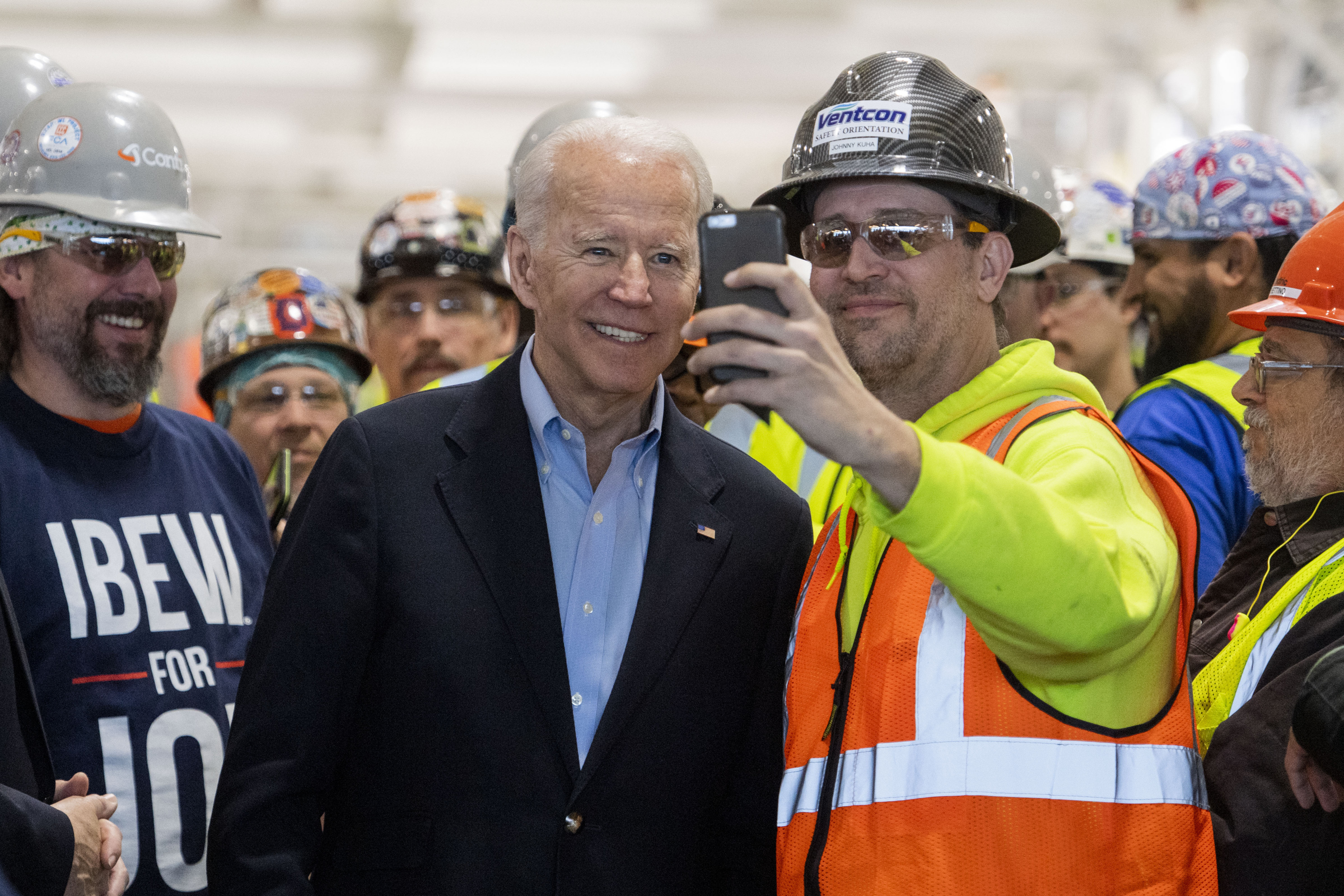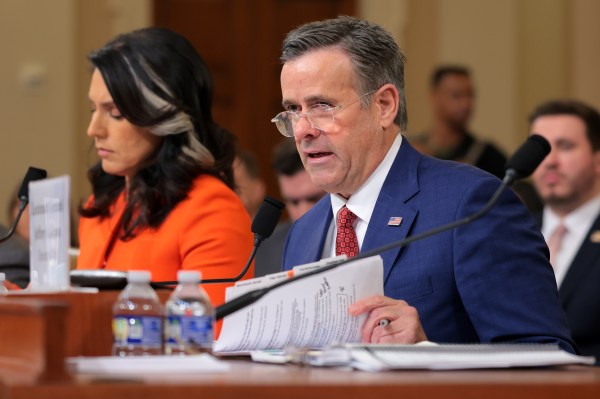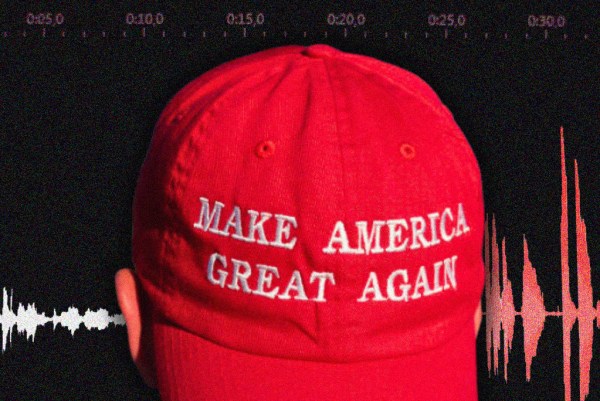Good morning and welcome to the next latest in our series, “The Biden Agenda.” We’ve invited some of the smartest thinkers and subject-matter experts we know to contribute to what will become an occasional series on what a Biden presidency might look like. Today’s piece is by Scott Lincicome, a leading expert on international trade policy. He’s a senior fellow in economic studies at the Cato Institute and a contributor to The Dispatch.

Political predictions are notoriously difficult; predicting a Biden White House’s trade policy is even more so. In general, supporters of open trade and the global trading system should prepare for an improvement in U.S. trade policy over the one advanced by President Trump since 2017, but it’s far from certain that the difference will be as big as hoped.
This tepid conclusion stems not from my own timidity or ignorance (well, not entirely at least), but instead from two key facts. First, Biden’s campaign team—much like the Democratic Party itself these days—is conflicted on trade: some senior advisers have long parroted labor union views on protectionism and industrial policy, while others preach from the Democrats’ urban, “globalist,” and increasingly suburban side of the aisle. Who will “win” this debate in a future Biden transition team is anyone’s guess.
Second, although Biden’s initial campaign proposals are heavy on economic nationalism and light on trade liberalization or agreements, “presidential campaign policies” do not necessarily become “White House policies”—a fact for most policy areas, but especially for trade policy. This is because, although most Americans support open trade, they don’t know or care much about (and thus vote on) the issue, and of the few who do care, the most intense and politically-valuable voters—say, former union members in Wisconsin—are on usually the protectionist side. Thus, campaigning politicians have long viewed protectionist promises as a way to win swing state votes with little risk of losing voters on the other side of the issue. That doesn’t necessarily mean they’ll govern that way. See, for example, President Obama’s quick dismissal of candidate Obama’s promise to renegotiate NAFTA.
At the same time, recent history does tell us that some of these protectionist promises often do become White House policy and even law. While Obama sidelined his NAFTA promises, he did chart a moderately nationalist course during his first term—for example, implementing Buy American provisions in the 2009 stimulus bill; sidelining Bush-eras free trade agreements with Panama, Colombia, and Korea (while not pursuing any new deals either); banning Mexican trucks on U.S. roads; and imposing “special safeguard” tariffs on Chinese tires. (He also campaigned on economic nationalism in 2012.) Even stalwart free traders like George W. Bush implemented steel tariffs and a massive farm bill that aggravated U.S. trading partners and stymied multilateral trade negotiations. Thus, contrary to the popular narrative among many “new thinkers” on the right and left, most presidents have not been naïve globalists but instead governed pragmatically on trade, balancing domestic political interests with commercial, foreign policy, and macroeconomic ones.
Biden’s trade policy would doubtless feature a similar balance, but its precise tilt is obscured by the aforementioned uncertainties. Nevertheless, given Biden’s own history of both supporting and opposing trade liberalization, his recent policy proposals, and the fact that the Democratic Party leadership tends to side with the “old school” unionist view of trade, we can generally assume that Biden will be less openly hostile to foreign trade as President Trump, but shouldn’t be expected to usher in a new era of pro-trade policies. Instead, we should expect some improvement, some stasis, and maybe even some deterioration.
Where Biden Will Most Likely be Better
Joe Biden’s record, recent campaign statements, and, quite frankly, essential not-Trump-ness indicate we could see a substantial improvement in four key trade policy areas. First, a President Biden would very likely re-engage in negotiations at the World Trade Organization (instead of threatening to withdraw every few weeks) and remove the United States’s hold on Appellate Body appointments—a Trump administration move that has crippled the much-heralded (and quite successful) WTO’s dispute settlement system and annoyed most of our closest trading partners. (Without an Appellate Body, WTO members can appeal adverse panel decisions “into the void” where they’ll remain incomplete until the AB is reconstituted, thus discouraging WTO disputes, encouraging unilateral retaliation, and injecting even more uncertainty into the trading system.)
WTO negotiations have struggled in recent years (and certainly not only because of Trump), but releasing the Appellate Body block and simply changing the United States’ tone and posture should help advance U.S. trade objectives—inside and outside the organization.
Speaking of outside, it’s also quite likely that the Biden administration would dramatically improve U.S. trade relations with close allies like the EU and Canada, which have deteriorated since 2016 because of Trump’s inexplicable obsession with bilateral trade balances and irrational use of “national security” tariffs on imports from these countries. Disagreements will undoubtedly continue, but I’d expect the aforementioned tariffs (and tariff threats) to quietly disappear and the Biden administration to look to work with these countries on China and other key issues (e.g., multilateral negotiations on industrial subsidies and climate change).
I would also expect the United States to once again engage with the EU on a trade agreement of some kind, though likely more limited in scope than traditional U.S. free trade agreements in order to avoid some of the problems, such as agricultural market access, that stymied the Obama administration’s Trans-Atlantic Trade and Investment Partnership (“TTIP”). If the Biden administration decides not to re-enter the Trans-Pacific Partnership (more on that below), then completing the Trump administration’s partial deal with Japan could also be in the offing.
Finally, we should expect a significant improvement in U.S. treatment of developing countries through unilateral “preference programs” like the Generalized System of Preferences, which alleviates duties on imports from poor countries and which the Trump administration has curtailed in an unsuccessful attempt to bully countries like India and Thailand into doing what we want. These programs have long enjoyed bipartisan support and benefit U.S. consumers in addition to helping developing economies.. It’s likely that they resume that position.
Where Biden Will Probably be the Same
The aforementioned changes should bring about a tangible improvement in overall U.S. trade policy and international relations more broadly, and they should eliminate some of the uncertainty that has hindered the U.S. economy in recent years. That may, however, be where the improvements end. On China, for example, it seems highly unlikely that Biden will eliminate Trump’s tariffs on more than $300 billion in annual Chinese imports due to recent Chinese government transgressions, an increasingly hawkish political consensus in Washington, and Biden’s own need to avoid proving Trump and Republicans right that he is “soft” on China. (As noted above, however, he’ll wisely add multilateral pressure to the United States’ China arsenal.)
I’d also expect little to no changes to U.S. trade remedy (anti-dumping and countervailing duty) policies, which—despite their numerous flaws—have long enjoyed bi-partisan support. Indeed, Biden has even subtly endorsed continuing the Trump administration’s ill-advised attempt to use the U.S. countervailing duty law to target other nations’ (not just China’s) currency policies.
Similar stasis may occur with respect to new U.S. trade agreements with developing countries, though for different reasons: Whereas Trump’s team couldn’t seal these deals due to their single minded focus on bilateral trade in goods and “unfairness” (whatever that means) more broadly, Biden’s team may find it extremely difficult, if not impossible, to convince a developing country to agree to the types of onerous labor and environmental rules that his campaign has proposed (and that congressional Democrats added to the USMCA). Indeed, Biden’s team has already stated that they won’t prioritize new FTAs, even as the EU and others race ahead to give their companies that advantage in key foreign markets.
Where Biden Might Actually Be Worse
In case the previous section didn’t depress you enough, let’s next examine the trade policy areas where a Biden administration might actually be worse. Most notable is Biden’s promise to impose carbon tariffs (aka a “carbon adjustment fee against countries that are failing to meet their climate and environmental obligations”)—something Elizabeth Warren’s campaign also proposed and an increasingly common feature of mainstream Democratic Party climate policy. In theory, a carbon tariff imposed in concert with a domestic carbon tax—essentially applying to imports the same tax that domestic goods face—is relatively uncontroversial (though reasonable minds can differ on the efficacy and impact of such policies). In practice, however, there is a serious risk that—given the difficulty of passing a domestic carbon tax in the United States, the relative ease of imposing tariffs without Congress (thanks, President Trump), and the long history of domestic industries turning well-meaning regulatory policies into straight-up protectionism –Biden’s climate plan becomes less about the environment and more about insulating political favorites from fair international competition. (For those who doubt this risk, I invite you to check out the EU or past attempts to add such measures to U.S. legislation.)
Another major risk lies in Biden’s plans to “revive” U.S. manufacturing through protectionist Buy American mandates and supply chain “repatriation” efforts. Though the Trump administration also supports such policies, they’ve been stymied by a lack of congressional support and thus relegated to tinkering at the margins of current law. If political trends continue, however, President Biden might not face similar obstacles and instead could see a Democratic Congress willing and eager to pass a major 2021 stimulus bill that, like the one 12 years earlier, was chock full of protectionist industrial policy.
What We Just Don’t Know
Even with the aforementioned disclaimer about the uncertainty of a Biden administration’s trade plans, there are two important areas that are especially opaque. First is the question of the Trans-Pacific Partnership, which Trump abandoned in early 2019. The agreement has since entered into force without the United States as the Comprehensive and Progressive Agreement for Trans-Pacific Partnership (CPTPP). Likely because of progressive opposition and pressure, Biden’s team has said he won’t prioritize re-entering CPTPP, but the economic and geopolitical benefits of doing so—particularly given the urgent need to counterbalance China’s influence in the AsiaPac region and the relative ease of rejoining the deal—have led many to forecast that a President Biden would experience a post-election conversion, “fix” CPTPP’s “problems,” and then work to re-join as soon as possible. Count me among those forecasters, though Biden’s about-face might not occur until later in 2021.
The second area of uncertainty relates to President Trump’s expansive use of unilateral trade measures—in particular Section 232 “national security” tariffs and Section 301 actions, which previous presidents avoided due to their problematic economic, legal, and geopolitical consequences but have become a favorite tool of President Trump, with little to no congressional or court pushback. Now that this genie is out of the bottle, would a President Biden, concerned with WTO and other international relations, try to stuff it back in, or would the measures’ potential (especially the lack of a congressional check on their use) just be too tempting, particularly for the aforementioned carbon tariffs? We shall see.
Despite these problems and uncertainties, it’s still relatively safe to assume that the improvements in U.S. relations with the WTO and close allies, as well as the departure of bizarre, flat-earther economic priorities, would ensure that the Biden administration’s trade policies constitute an improvement over President Trump’s. Given the myriad failures of “America First” trade policy, however, that’s a very low bar to hurdle—and it’s far from clear that President Biden would clear it by much.
Photograph by Carolyn Van Houten/Washington Post/Getty Images.







Please note that we at The Dispatch hold ourselves, our work, and our commenters to a higher standard than other places on the internet. We welcome comments that foster genuine debate or discussion—including comments critical of us or our work—but responses that include ad hominem attacks on fellow Dispatch members or are intended to stoke fear and anger may be moderated.
With your membership, you only have the ability to comment on The Morning Dispatch articles. Consider upgrading to join the conversation everywhere.